Capsule Review: EVGA GeForce GTX 780 Superclocked ACX
by Ryan Smith on September 22, 2013 12:00 PM EST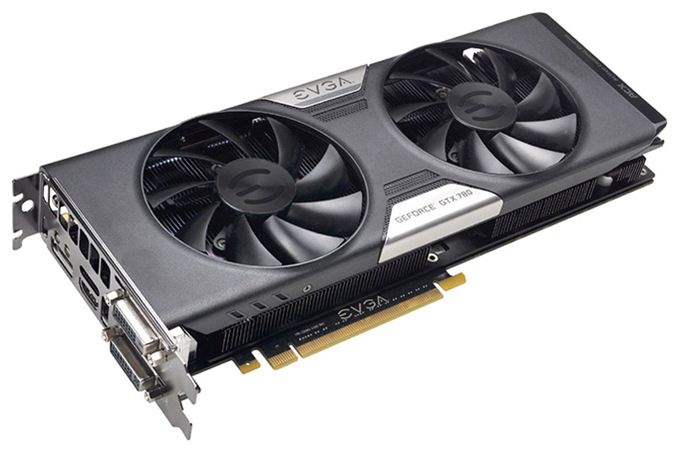
Looking at the launch of the GeForce GTX 780 in retrospect, one of the more unusual aspects of the 780 was just how close NVIDIA let their lower-tier GK110 card get to the upper-tier GTX Titan. GTX 780 was able to deliver 90% of GTX Titan’s performance, but did so at just 65% of the price of GTX Titan.
Now a 10% performance gap is a fairly common gap for high-end NVIDIA cards. The price gap on the other hand is clearly wider than normal. For example, in the last generation the GTX 680 and GTX 670 were separated by roughly the same performance gap, but the GTX 670 came in at 80% the price of the GTX 680, not 65%. Ultimately NVIDIA’s “prosumer” positioning made Titan a very expensive card for gaming, with the end result being that the more strictly gaming focused GTX 780 could deliver very similar performance at a much lower price tag.
But the more interesting outcome of this performance/price disparity is how easy it is to close the performance gap against the much more expensive GTX Titan through overclocking. In the big picture 10% between tiers is almost nothing, and as we’ve already seen GTX 780 can more than make up that last 10% in overclocking. NVIDIA’s partners are of course well aware of this fact, and as the partners traditionally do, factory overclocked cards were a foregone conclusion. And with such a narrow gap between GTX 780 and GTX Titan, those factory overclocked cards should have little trouble matching GTX Titan.
Today we’re taking a quick look at one of those cards, EVGA’s GeForce GTX 780 Superclocked ACX. The 780SC ACX is a fairly traditional card for EVGA, filling in as the company’s standard first-tier factory overclocked card. With the GTX 780 Superclocked EVGA has rolled out two variations of this card, the first variation being an overclocked version of the reference card, and the latter being a semi-custom design with the company’s new ACX cooler.
| GTX Titan | EVGA GTX 780SC ACX | GTX 780 | GTX 770 | |
| Stream Processors | 2688 | 2304 | 2304 | 1536 |
| Texture Units | 224 | 192 | 192 | 128 |
| ROPs | 48 | 48 | 48 | 32 |
| Core Clock | 837MHz | 967MHz | 863MHz | 1046Mhz |
| Boost Clock | 876Mhz | 1020Mhz | 900Mhz | 1085MHz |
| Memory Clock | 6GHz GDDR5 | 6GHz GDDR5 | 6GHz GDDR5 | 7GHz GDDR5 |
| Memory Bus Width | 384-bit | 384-bit | 384-bit | 256-bit |
| VRAM | 6GB | 3GB | 3GB | 2GB |
| FP64 | 1/3 FP32 | 1/24 FP32 | 1/24 FP32 | 1/24 FP32 |
| TDP | 250W | 250W | 250W | 230W |
| Transistor Count | 7.1B | 7.1B | 7.1B | 3.5B |
| Manufacturing Process | TSMC 28nm | TSMC 28nm | TSMC 28nm | TSMC 28nm |
| MSRP | $999 | $659 | $649 | $399 |
Touching briefly upon the specifications of the 780SC ACX, the card is a fairly by-the-books factory overclock. EVGA has jumped the core clock from the GTX 780’s standard 863MHz to 967MHz, a 104MHz (12%) core clock increase. The official boost clock grows by even more – 120Mhz over reference – to 1020MHz. Memory clockspeeds on the other hand remain unchanged, leaving the card at 6GHz, making this a somewhat unbalanced overclock. However it's also one that’s largely tempered by the fact that the 384-bit wide memory bus of the GTX 780 provides plenty of bandwidth; after all this is the same amount of memory bandwidth GTX Titan has in the first place. The end result is that with few games being memory bandwidth limited, the 780SC ACX should scale nicely with clockspeeds.
EVGA’s design is a semi-custom design, pairing a standard reference board with their ACX cooler. Getting to the cooler momentarily, the board is otherwise unremarkable compared to other GTX 780s. The same voltage and power limitations apply here, so next to the factory overclock itself the biggest gains for the 780SC ACX come from the customary binning and reprogramming these cards go through. This means that the 780SC ACX runs at higher clockspeeds for any given voltage on the curve, improving performance without significantly increasing power consumption.
Moving on we have EVGA’s new ACX cooler, which is as much the star of the show for today’s review as the factory overclock itself is. EVGA isn’t a stranger to custom coolers, but their strongest hands have traditionally been their superbly supported reference cards, and their niche-in-a-niche products such as their Hydro Copper cards with pre-installed waterblocks or their extremely high-end Classified cards, neither of which is quite as mass market. EVGA has also offered alternative coolers at various points, but never as a principle product line.
However with their ACX cooler EVGA is looking to change that by branching to what’s loosely defined as the “branded custom cooler” market. This is a market which has seen the likes of Gigabyte, MSI, and others make a solid name for themselves by offering semi-custom and custom cards with branded coolers such as their respective Windforce and Twin Frozr coolers. Custom coolers are obviously by no means new, but the branding and reuse of the basic designs of these coolers have allowed the partners to make their coolers signature products for their respective brands in order to better stand out against both reference designs and competitors cards. Invariably open air coolers in design, these coolers offer a fairly well understood alternative to the blower designs most high-end reference coolers use, ultimately allowing partners to serve the preferences of buyers at both ends of the spectrum.
With that in mind, EVGA’s ACX cooler is a fairly typical entry for the custom cooler market, being based in principle in a twin fan open air cooler. This means we’re looking at a three part design: a baseplate for rigidity and heatsinking of smaller components, a heatsink that runs nearly the entire length of the card and is attached to the GPU via five aluminum heatpipes and an aluminum baseplate, and finally a pair of 90mm fans to provide airflow over the entire card. All in all it’s a common design principle for high end cards these days – thanks in large part due to the laws of physics – but it’s a common design that has proven to work well and makes some very straightforward and well understood tradeoffs in cooling performance versus noise. An open air cooler should deliver equal or better temperatures at lower noise levels, at the cost of shoving more of the cooling workload onto the chassis itself.
Meanwhile, though the basic design principles of the ACX cooler may be common, EVGA has a lot of latitude when it comes to construction, and this is where they’re hoping to separate themselves in the crowded field of branded custom coolers by building a better twin fan cooler. EVGA’s “secret sauce” here is largely in the design of their fans, with EVGA taking care to point out the design choices they made for both the blades and the motors. With respect to the blades EVGA says they’re using blades that are both stronger and lighter than what we typically see, though we don’t have the data the confirm this.
What should be more significant is EVGA’s use of ball bearings in the fan motors. Ball bearing fans are no more a breakthrough than twin fan coolers, however bearings are a seldom promoted item and as a result we rarely know what type of bearings are in use or when manufacturers switch between the bearing types. So consistently using ball bearings on all of their ACX coolers is if nothing else a promotional point for EVGA, as they’re a more expensive/premium option than sleeve bearings. Mechanically speaking, compared to sleeve bearings, ball bearings typically have greater longevity and a bit less noise under heavy load, in exchange for a bit more noise at idle, making them a good tradeoff for a high-end card. From a practical point of view the longer lifespan of ball bearings will be the greatest gain out of this, while any noise tradeoffs are secondary as the fan itself will usually be the greater factor. Of course EVGA’s specific numbers aren’t something we can validate, but the general benefits are fairly straightforward.
Moving on, as a semi-custom card the 780SC ACX is otherwise identical to the reference GTX 780. This means it has the standard NVIDIA display I/O configuration of 2x DL-DVI, 1x HDMI, 1x DisplayPort 1.2, and the same 10.5” length. Even the official TDP is the same at 250W, though as we’ll see in our testing there is a slight increase in power consumption at the wall.
Rounding out the package is EVGA’s usual collection of software and hardware accessories, including a pair of PCIe power adapters and a DVI to VGA adapter. As far as EVGA’s software goes there’s little to be said that we haven’t said before: EVGA still shares the gold standard for software, with their fantastic Precision X overclocking utility and their OC Scanner X artifact scanning utility.
Meanwhile, as with all of EVGA’s North American cards, the 780SC ACX comes with EVGA’s standard 3 year transferable warranty, with individual 2 or 7 year extensions available for purchase upon registration, which will also unlock access to EVGA’s step-up upgrade program. Finally, the MSRP on the card is $659, only $10 above the MSRP for the standard GTX 780. Though GTX 780 base pricing is by no means cheap, as we’ll see in our benchmarks $10 (2%) more for a 12% overclock and Titan-like performance renders the stock GTX 780 redundant almost immediately.


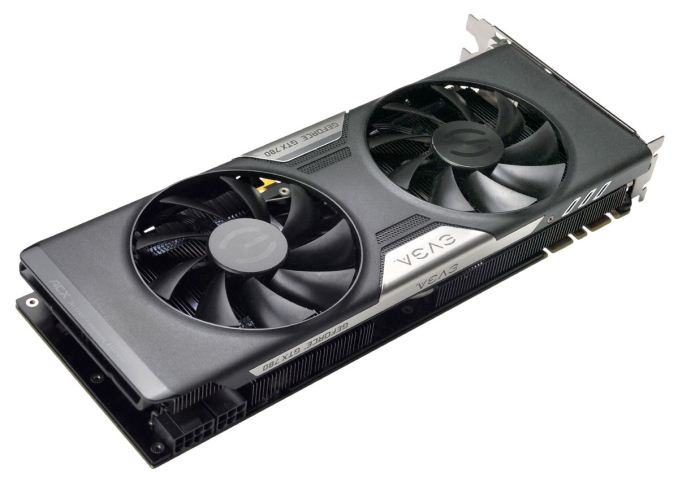






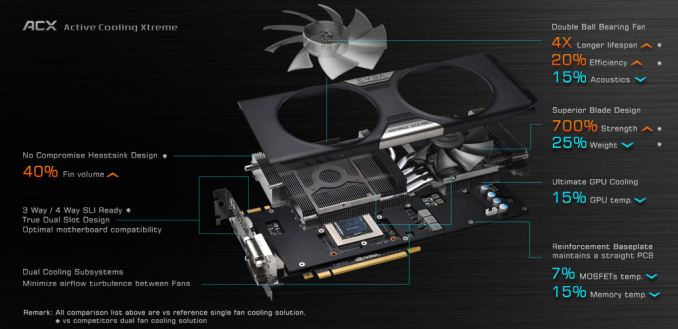






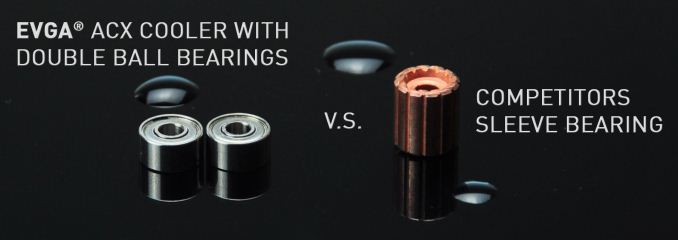
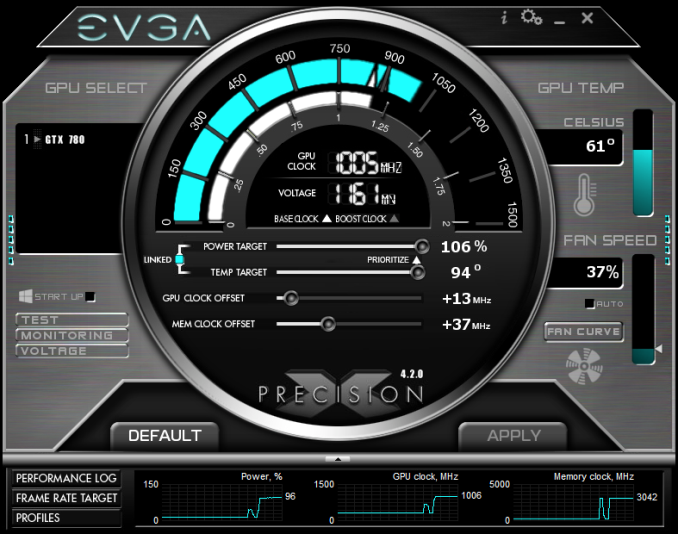








40 Comments
View All Comments
cactusdog - Sunday, September 22, 2013 - link
Im not sure its a good time to buy a card like this, with the R9 290X coming in a couple of weeks.CiccioB - Monday, September 23, 2013 - link
Because you buy top of the performance with stable drivers and assured quality.If one is interested in these kind of gfx board would have just to wait for AMD to launch their new series for the price to lower a bit.
For someone good solid drivers available yesterday is something that is more valuable then 5 frames more tomorrow (and support for new games next month).
tackle70 - Monday, September 23, 2013 - link
Thanks for the review!I picked up a pair of these at launch to replace a pair of lightning 7970s... couldn't be happier with them. Ridiculously fast, cool, and quiet.
Now hopefully their price will drop by $100 or so as AMD's new cards come out and can finally offer up some competition.
bds71 - Monday, September 23, 2013 - link
it amazes me that reviewers still try to make titan out as a consumer gaming card. it's claim-to-fame is its number crunching ability (particularly FP). it's a monster!! it's not a gaming card, nor, i suspect, was it ever intended to be. i bought a 690 when they were released (OK, maybe it took me a few months to actually FIND one, but you know what i mean)....for the same price, it utterly defeats the titan to the point of rediculousness. i calculated my own numbers based on this review as well. on average, the stock 780 is 72% (performance) of the 690 for 65% of the cost - more what one would expect with their differences in arcitecture (104 vs 110). in addition to this, i also fold/crunch. as a cruncher, the 690 is STILL better than titan due to its two cores!! if any of you bought a titan (for gaming, or crunching) i just gotta ask: why? the 690 is 10-15% better in both respects. sure, i can see getting a 780 vs 690: $350 is nothing to sneeze at, and it is slightly better (7%) performance/cost ratio. but, titan? fail. (unless your one of those very few/limited folks who actually do use it for its FP operation)erple2 - Tuesday, September 24, 2013 - link
Interesting. According to anandtech's own bench, the titan obliterates the 690 in compute tasks. Which is really what I expect given the 680's relatively weak compute units. So I'm not quite sure which compute benchmarks you're running to demonstrate the superiority of the 690 over the Titan...bds71 - Monday, September 23, 2013 - link
and before anyone thinks to comment about OCing the 780 vs 690 (this being an article about an OC'ed 780) they both have about the same OCing potential - both can reach 1200 MHz without too much effort so i would say OCing is a wash between the two. that's why i did not use the numbers from the OCed version in this review (i used numbers from the stock)tackle70 - Monday, September 23, 2013 - link
OCing is absolutely not a wash between the two on average... 780 is quite superior *on average*http://hwbot.org/hardware/videocard/geforce_gtx_69...
http://hwbot.org/hardware/videocard/geforce_gtx_78...
JPForums - Monday, September 23, 2013 - link
What's the point of all the ventilation in the back of the card when you set the fins vertically. Airflow won't directly exhaust out the back with a wall of fins blocking it. Half the heated air is directed at the motherboard. It only really serves to let noise out. The power side of the card doesn't make as much of a difference, but the bracket side of the card should have horizontal fins. Other than that, I've always like EVGA board design and customer support. It is good that they've been trying to expand their cooler designs for the 600 and 700 series. I hope they keep trying to improve.alkhanzi - Monday, September 23, 2013 - link
The 7990 hugely beats both the Titan and EVGA 780 in each and every of the benchmarks, and costs the same(+ the game bundle).tackle70 - Monday, September 23, 2013 - link
The 7990 is, on average, a whopping 4% faster than this card at 1920x1080, and just 14% faster at 25601600...Given the heat/coil whine/driver issues that the 7990 has, I'll take the 780 ten times out of ten.